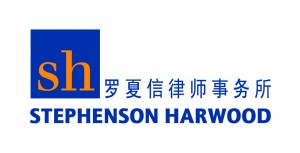1 September 2021
Reform of interest rate benchmarks – when is the deadline?
Over the last two years, LIBOR transition has undoubtedly been one of the most discussed topics among the global banking industry. Banks, corporates and regulators around the world have had numerous discussions as to which Alternative Reference Rates ("ARRs") should the market adopt when LIBOR eventually comes to its end.
On 5 March 2021, the UK Financial Conduct Authority formally confirmed that all LIBOR settings will either cease to be provided or no longer be representative:
– immediately after 31 December 2021, in the case of all sterling, euro, Swiss franc and Japanese yen settings, and the 1-week and 2-month US dollar settings; and
– immediately after 30 June 2023, in the case of the remaining US dollar settings.
Hong Kong Monetary Authority's (HKMA) latest circular
On 19 August 2021, HKMA issued a circular (the "Circular") to all authorised institutions (AIs) providing updates on the interest rate benchmarks reform. Three key takeaways form the Circular:
1. HKMA follows the formal recommendation by the US Alternative Reference Rates Committee (ARRC) to replace LIBOR with the forward-looking Secured Overnight Financing Rate (SOFR) term rates as the preferred ARR.
2. HKMA formally postpones the restriction requiring AIs to cease to issue any LIBOR-linked products from 30 June 2021 to the end of 2021 (the "Deadline"). This gives market participants around four months more from now to decide on their response to the reform.
3. To monitor AIs' transition away from LIBOR, HKMA will conduct its "Survey on Reform of Interest Rate Benchmarks" more frequently.
Unless the Deadline is further pushed back, bank customers must use ARRs (including but not limited to SOFR term rates, the recommended ARR) in any new contracts with an AI from 1 January 2022 onwards, except in the following four circumstances where US dollar LIBOR-linked contracts may be allowed until June 2023, in order to manage (or help bank customers manage) the risks associated with pre-existing US dollar LIBORlinked contracts:
(a) transactions that reduce or hedge an AI's or its clients' US dollar LIBOR exposures connected with contracts entered into before 1 January 2022;
(b) market making in support of client activities related to US dollar LIBOR transactions executed before 1 January 2022;
(c) novations of US dollar LIBOR transactions executed before 1 January 2022; and Money lending regime: more stringent regulatory measures LIBOR transition – update from Hong Kong
(d) transactions executed for purposes of required participation in a central counterparty auction procedure in the case of a member default, including transactions to hedge the resulting US dollar LIBOR exposure.
By only permitting four situations where ARRs are optional, it appears that the city's regulator is further accelerating its efforts on LIBOR transition since its previous circular on 8 July 2021 requesting AIs to distribute circulars to their corporate clients with which they have LIBOR-linked products.
Implications to AIs
With only approximately four months until the Deadline, we believe now is the time for AIs to push for and complete the transition plans which they have drawn up over the last two years, including:
1. Which ARRs should be made available for offer:
As banking product providers, AIs should evaluate internally and determine what ARR-linked products they would be ready to offer to their clients, taking into account various factors such as:
(a) Impact assessment: each AI should assess from its own point of view the availability and reliability of an ARR.
(b) Internal capacity: an AI should take stock of the knowledge and readiness of its staff towards a particular ARR.
(c) Firm infrastructure: operational and IT systems support, data administration and management and workflow updates are also important considerations.
2. Amendment of existing LIBOR-linked products:
As part of the contract management exercise during LIBOR transition, we expect AIs to have identified existing LIBOR-linked products.
(a) Contracts without fallback provisions (i.e. provisions setting out how LIBOR will be replaced when it becomes unavailable): AIs should contact their clients to discuss and agree on the fallback arrangements or amend these contracts with reference to ARRs. Although HKMA only restricts AIs from entering into new LIBOR-linked contracts after the Deadline, AIs should consider the impact and risks posed to themselves and their clients if there are no fallback arrangements and they are going to rely on a "non-representative" LIBOR benchmark even such benchmark continues to be published until a later date.
(b) Contracts with fallback provisions: AIs should closely monitor the market and start screen rate replacement negotiation with their clients accordingly.
Given the large volume of existing LIBOR-linked products and the necessary paperwork to document the necessary amendments, we recommend AIs to start the discussion as soon as possible. It is quite unlikely that there could be a "one-size-fit-all" set of amendment language, and each product must be evaluated independently according to its existing terms to document the corresponding and desired changes tailored to such product and the customers. Each AI's overall transition policy would also depend on the type of markets it is in and its exposure to LIBOR.
3. Client outreach and awareness:
As noted by HKMA in the Circular, AIs should be proactive and take the initiative to promote the suitable ARR(s) to their clients and provide the necessary information for their clients to determine whether they should enter into SOFR or other ARR-linked contracts. While this will require plenty of time and effort, especially for clients who prefer a "wait-and-see mindset", frontline staff of the AIs are in the best position to utilise their relationship with the clients and provide the necessary communications. After all, the transition from LIBOR is a market- (rather than a regulator-) driven exercise.
For discussions on the planning for transition, any amendments to documentation or preparation of client publications and presentations, please get in touch with any of us.
Please get in touch if you are interested in discussing any of the above.
For further information, please contact:
Minnie Wong, Associate, Stephenson Harwood
minnie.wong@shlegal.com





